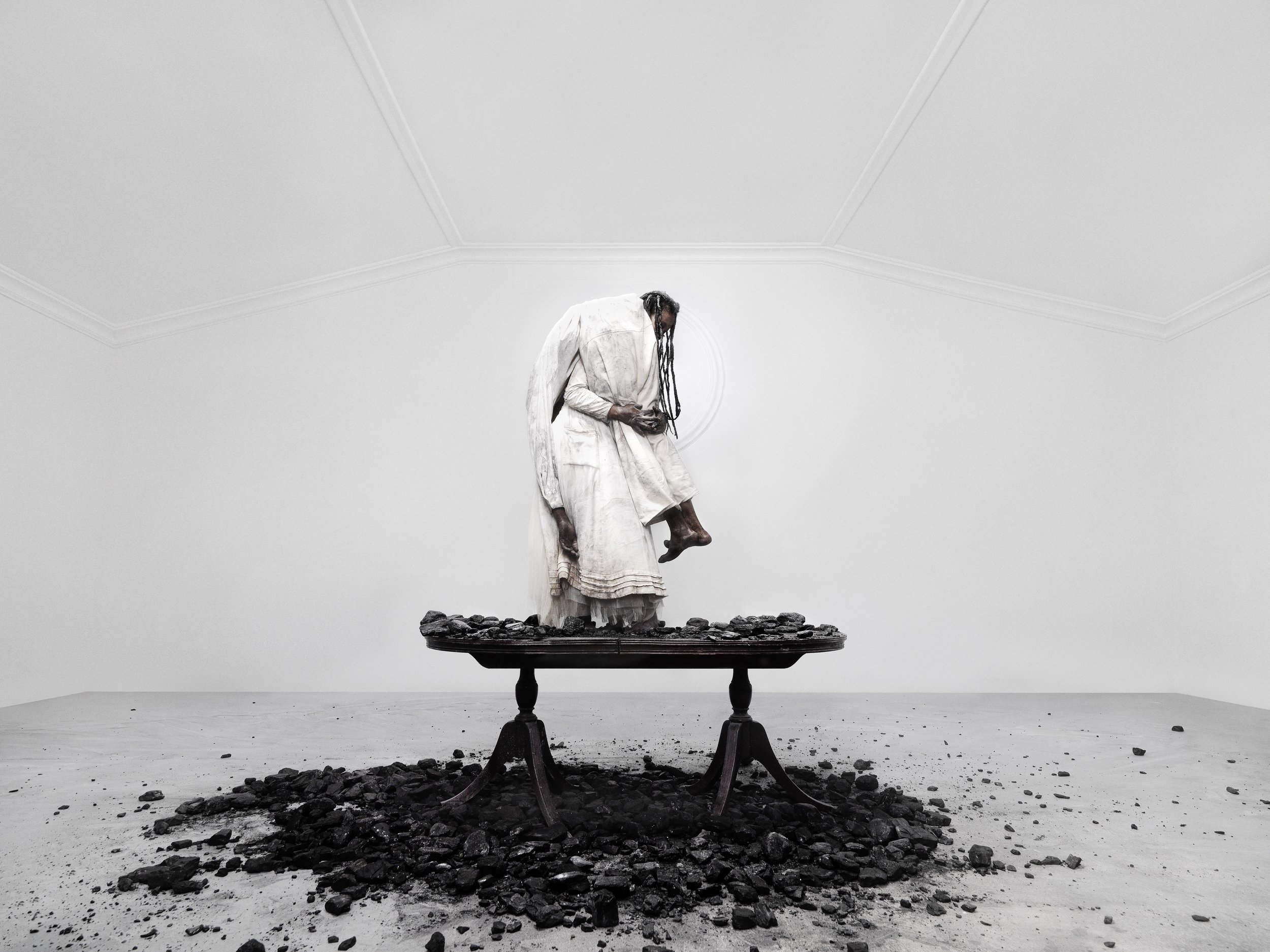
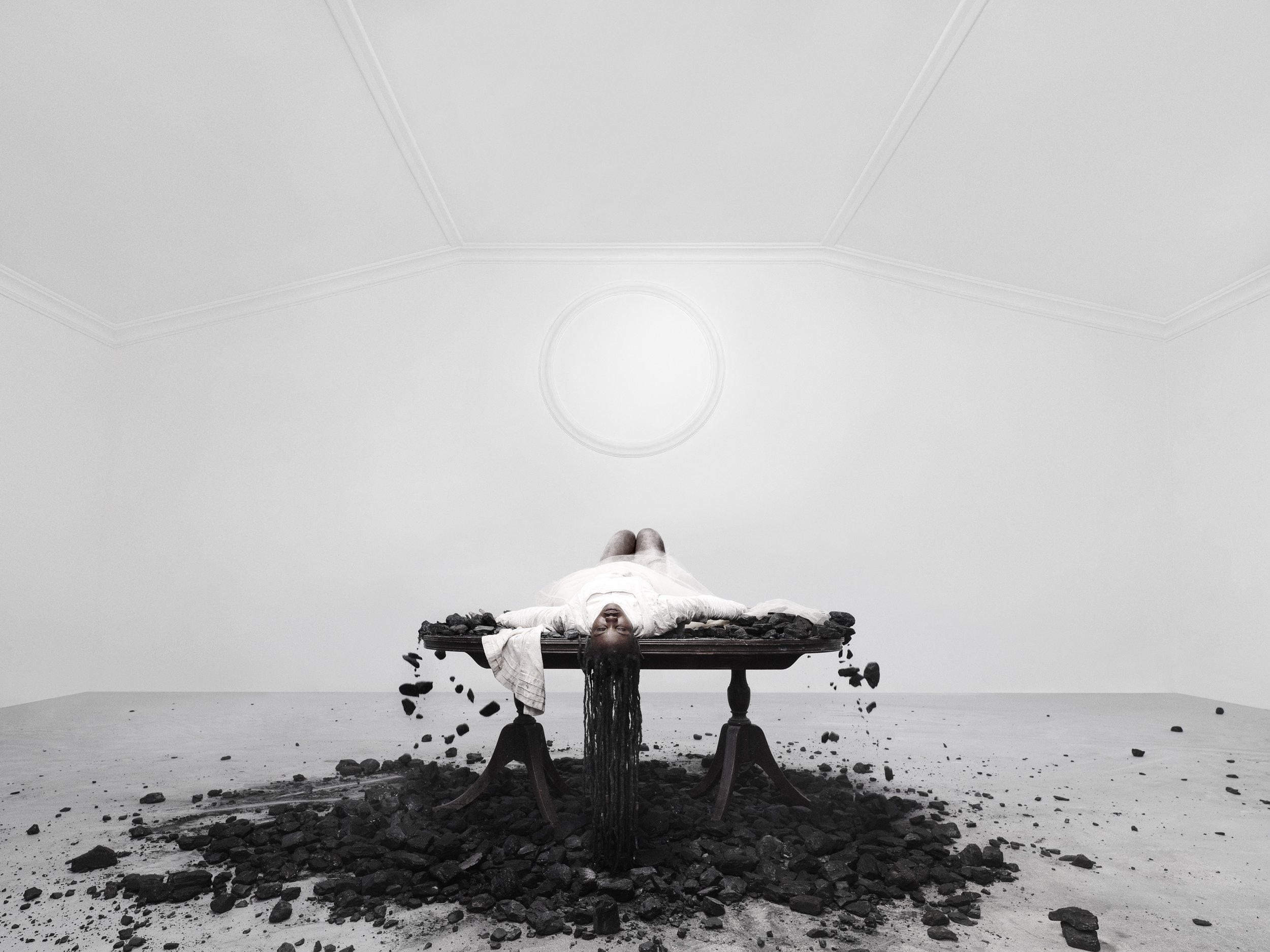

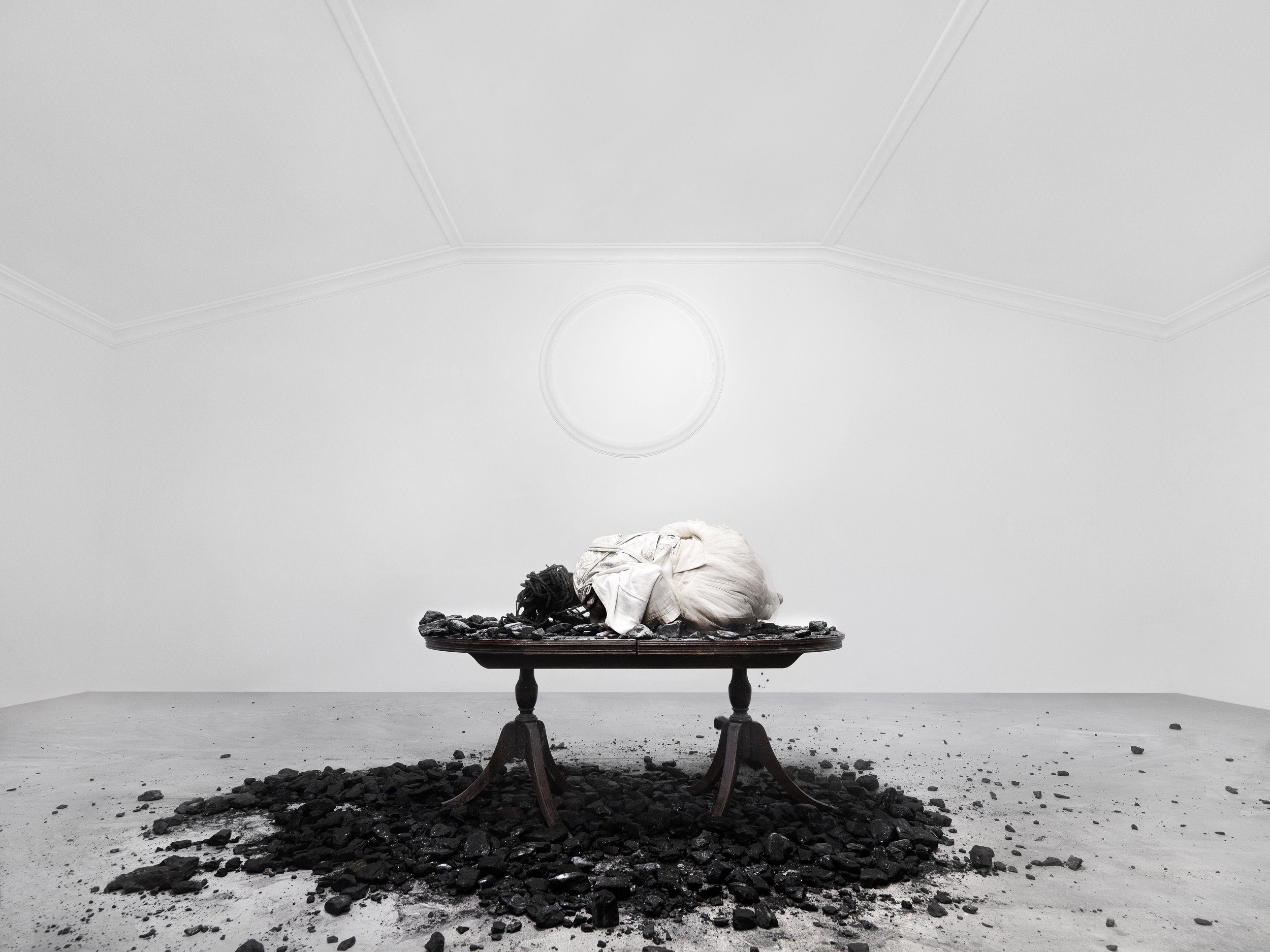


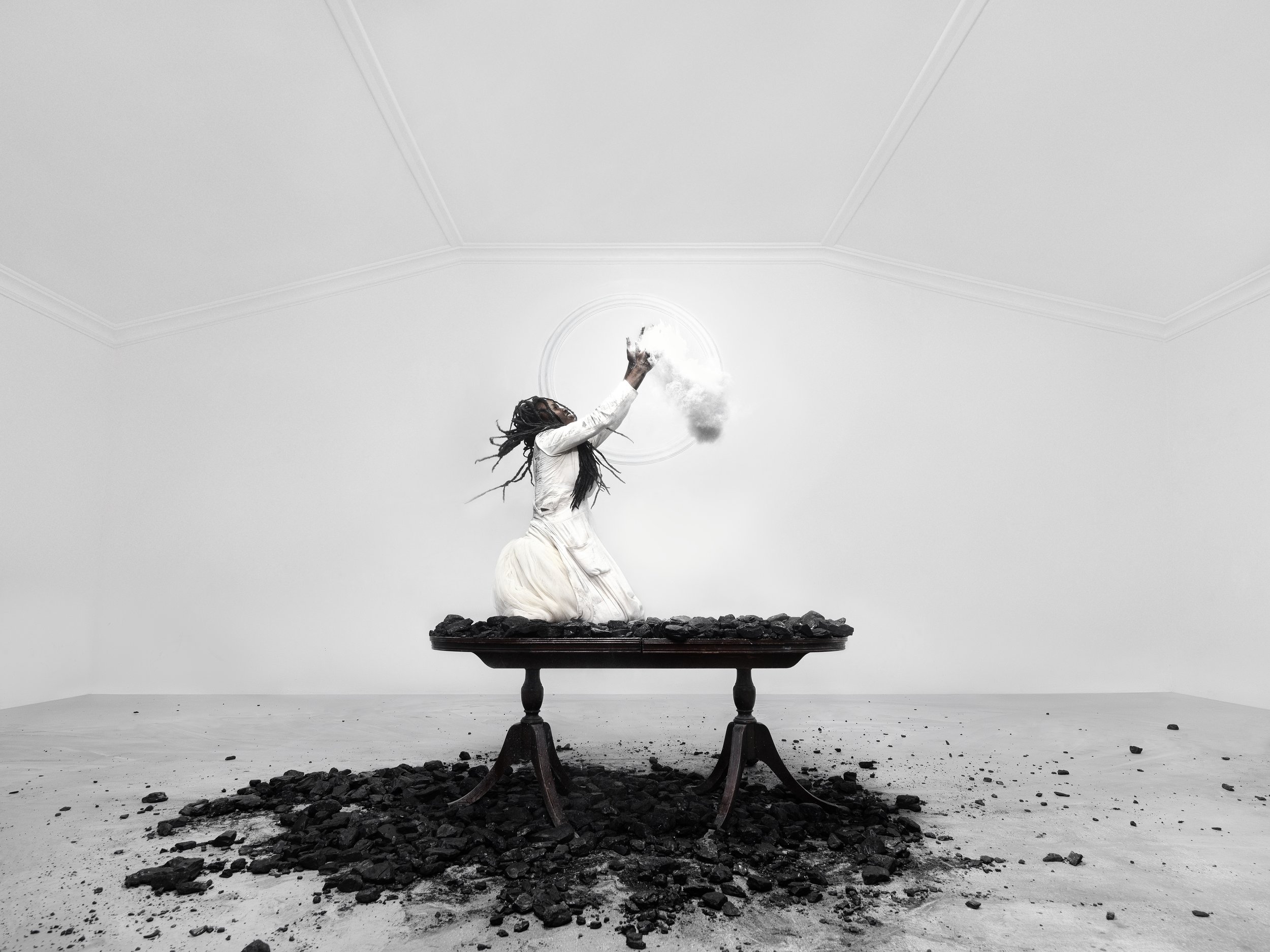
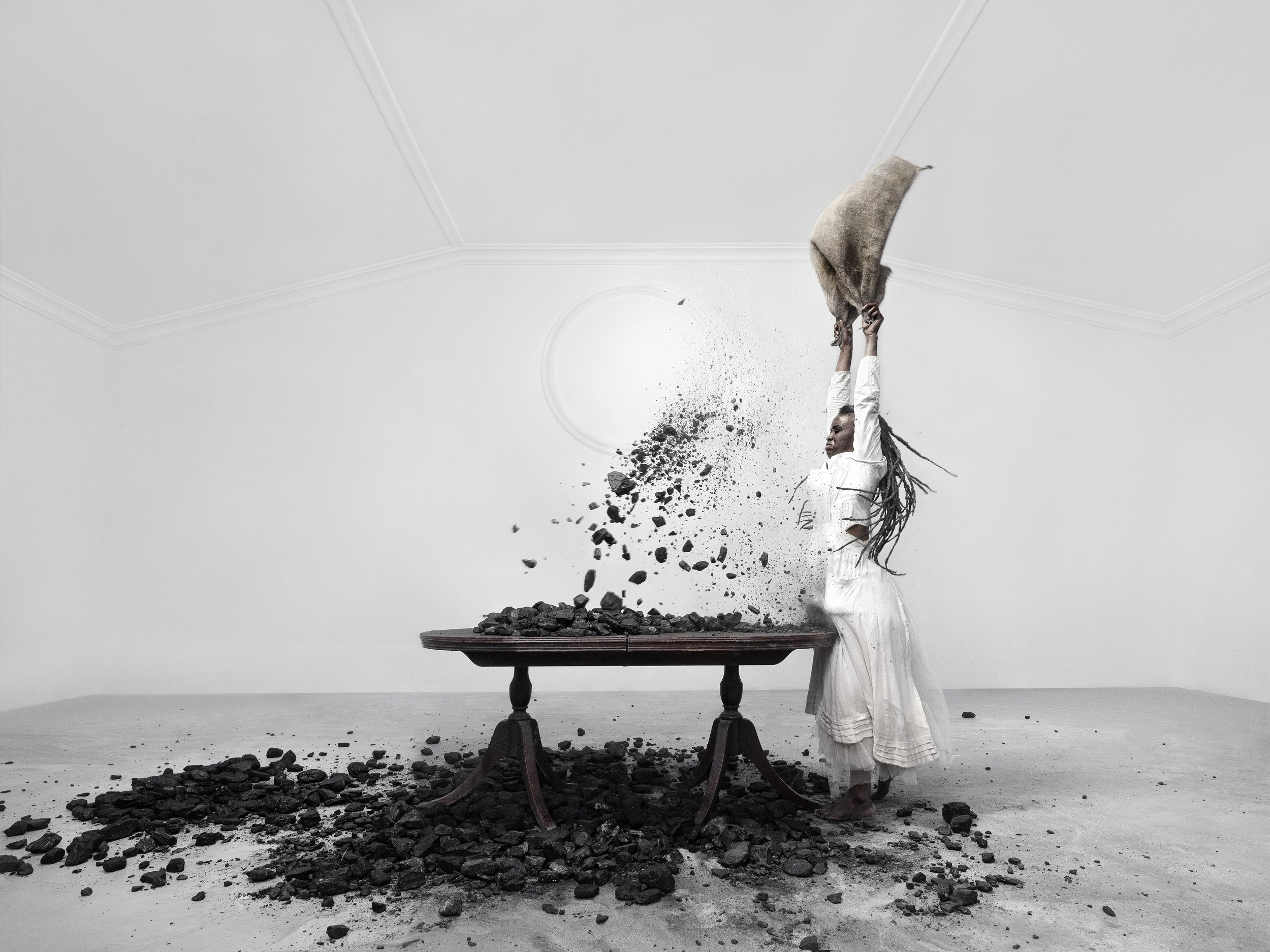


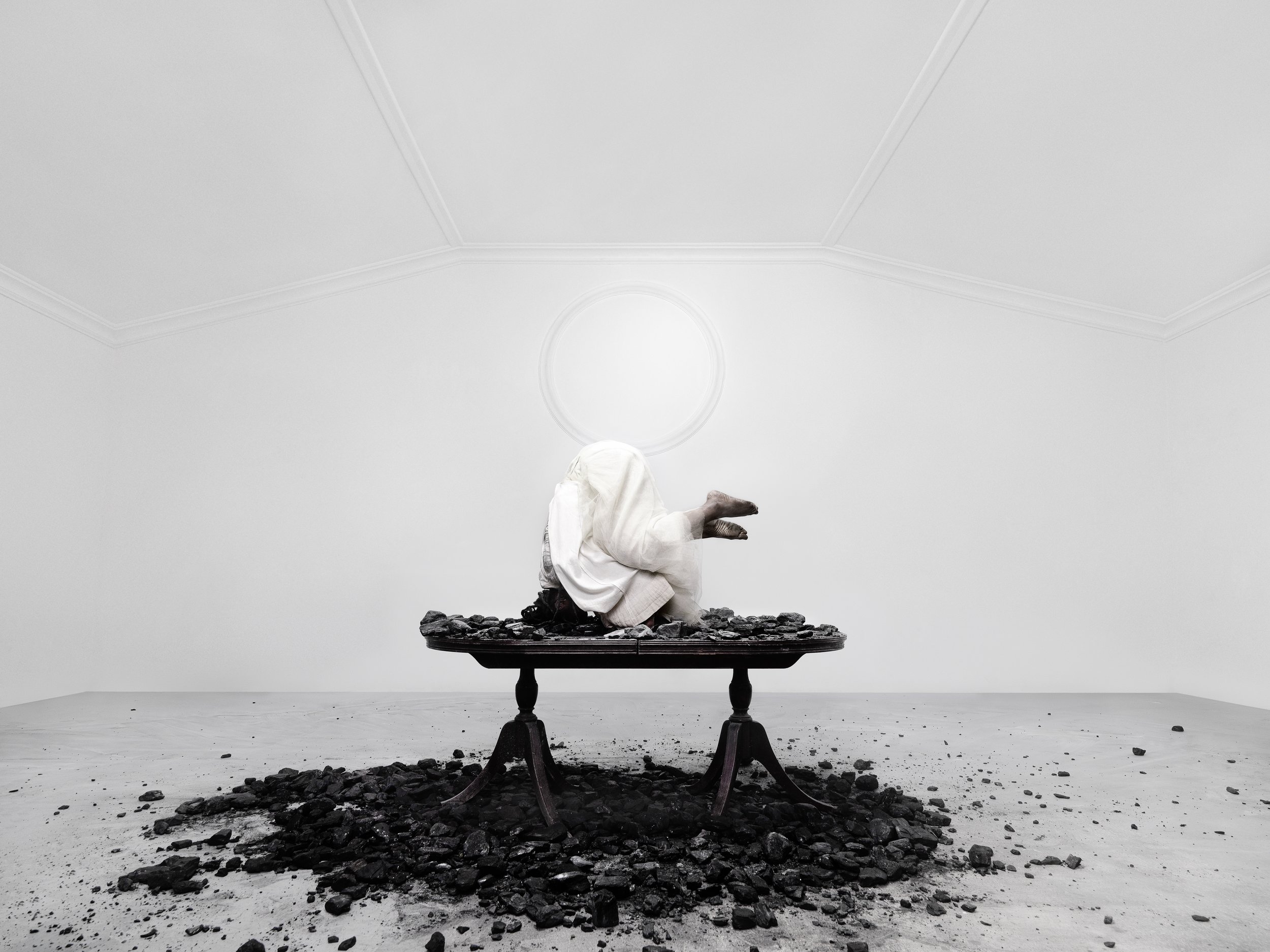
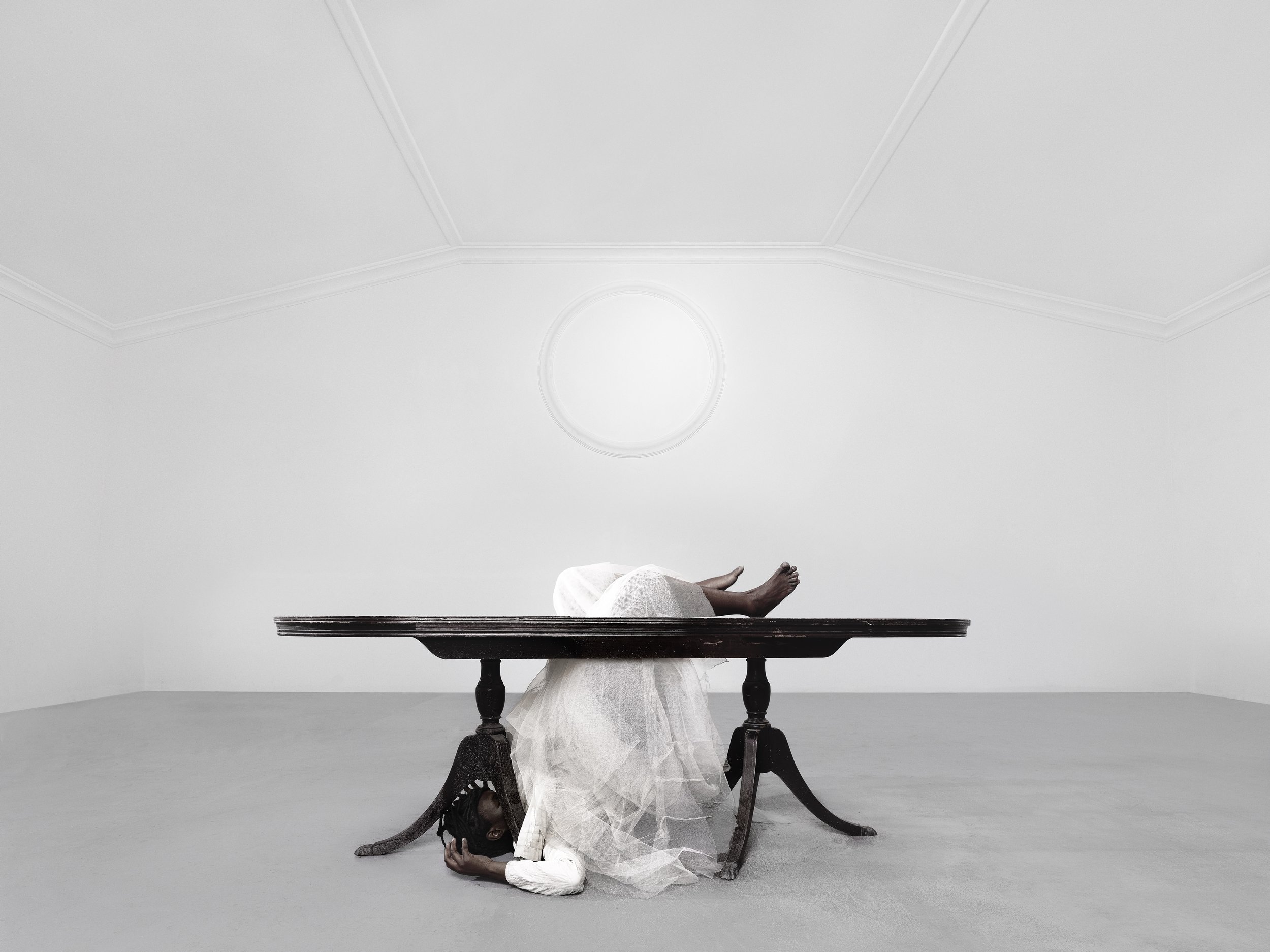


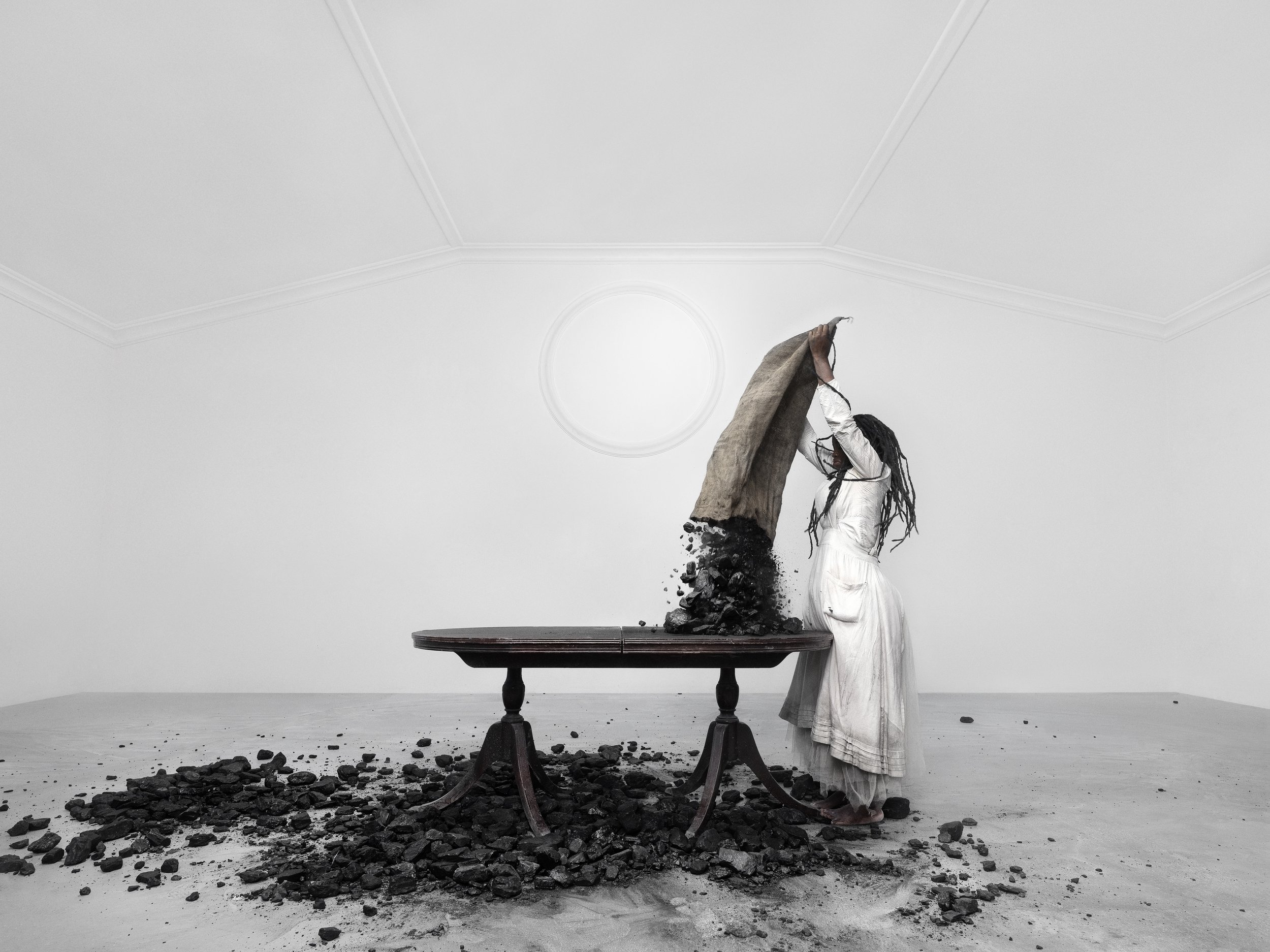
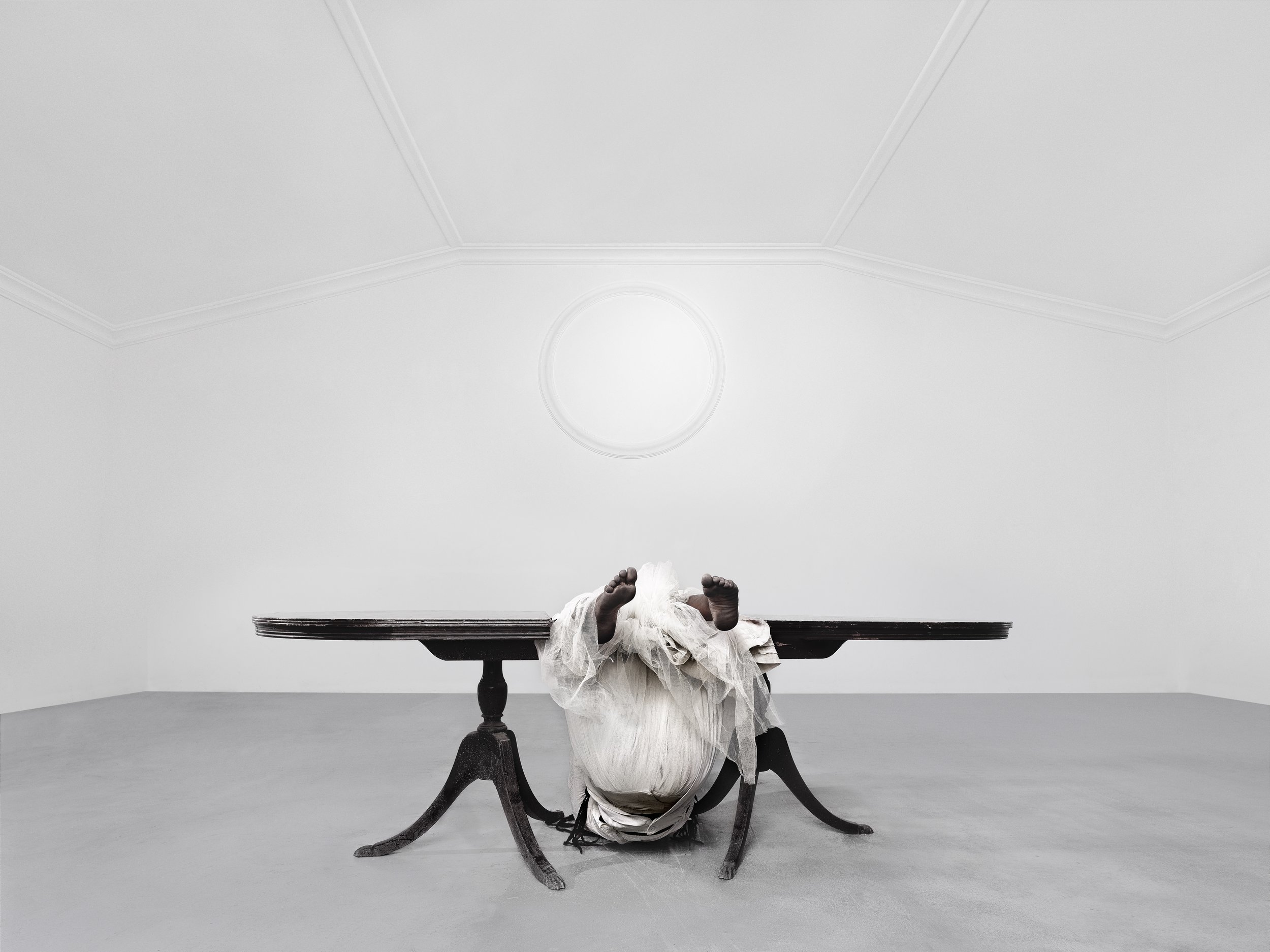


ZION deals with the relationship between body and place. The idea that all people are meant to belong somewhere, some place, yet in reality there are millions of people that are unsettled, in search of refuge, migrating across borders and landscapes for various reasons.
In this work there is no obvious signifier of place except for a heap of coal being thrown on a table, onto the floor and over he body. The black rocks of fossilised material represents the abundant natural mineral wealth deposited beneath the ground.
Whilst coal is a valuable source of energy across the world, sustaining modern economies and industries, the more valued minerals such as oil, gold, copper and diamonds, which are found in abundance on the African continent, often breed and fuel conflict.
And whilst most people are forced to flee from their homes due to harsh climate and collapsing economies, civil war is amongst the leading causes of migration across the african continent.
As such, the depiction of coal in this series not only refers to the mineral wealth attached to place, it also refers to the absence of place as people flee from their homes due to the violence that follows the exploitation of these types of mineral resources.
The Zion series thus refers not only to the absence of place/home but also to the many conflicts that have caused the forced migration of millions of African people within the African context, casting them into a life of refuge.
The series depicts a struggle of a woman, who in the time of conflict often assumes the role of the provider and a carer, struggles to retain some sense of home....she is seen at the diner table serving a resource for the (human) family to consume...while in a fleeting state.
In this work the tensions of this relationship of exploitation is anchored by an unusual love story.
